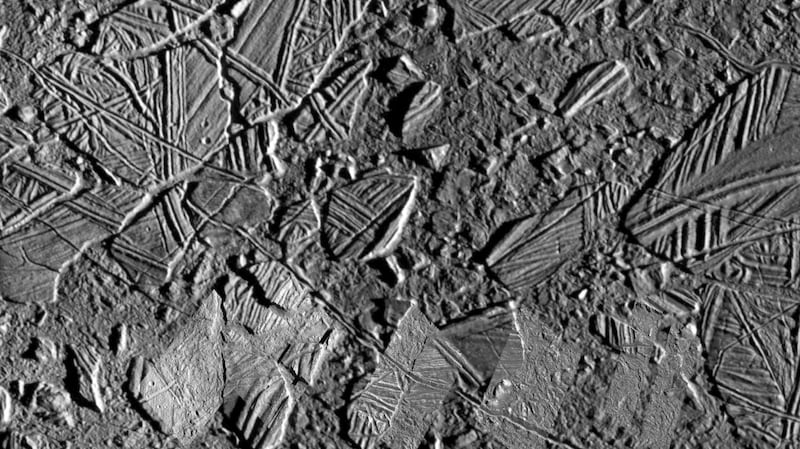We Irish are everywhere. In his St Patrick’s Day speech this year, President Michael D Higgins expressed this rather elegantly: “As a migrant people,” he said, “the Irish have brought their culture and traditions to many new homelands, and in doing so they have been peerless ambassadors for our nation.”
Another way of putting it would be to say that it’s hard to get away from us. In fact, with 33 million Americans, six million UK residents and two million Australians claiming some sort of Irish connection, let’s face it – we’ve gone a bit viral.
We’ve even invaded outer space. The surface of the planet Mars might not appear to bear much resemblance to the colours and contours of the Irish rural landscape: yet there are Martian craters named “Beltra”, “Clogh”, “Dromore”, “Fenagh”, “Glendore”, “Lismore”, “Louth”, “Navan”, “Tara” and “Wicklow”.
But, you may object, Mars is one of our nearest neighbours. Surely once you travel further out into the solar system you’ll escape the gravity of Irish influence? Not so. In recent years there has been a great deal of scientific interest in Jupiter’s moon Europa. Slightly smaller than our own moon, it has a tenuous atmosphere composed mostly of oxygen, and a surface striated by cracks and streaks.
And on this planetary moon far, far away, there’s a little patch of Ireland: Conamara Chaos, so named because it resembles the rugged landscape of west Galway as seen from the air.
Check it out on the Nasa website, solarsystem.nasa.gov, where you can fly briskly across this area of chaotic terrain. It consists of rafts of ice that have obviously moved at some point; they in turn are surrounded by a layer of jumbled ice that may have formed when water emerged from below the moon’s icy surface, suggesting that Europa’s Conamara may sit atop a liquid ocean. Which, in terms of current astrophysics research, really is the pot of gold at the end of the rainbow.
If Europa's wilder side put somebody in mind of Connemara, parts of Connemara are strikingly reminiscent of other planets. If you've ever got down on your hands and knees to take a close look at the extraordinary sand at Mannin Bay, near Clifden, you'll know exactly what I mean. Here is how Tim Robinson describes it in his book The Last Pool of Darkness: "silvery, glimmery, moon-pale, and it crunches underfoot pleasantly; pick up a handful of its beach and you see it is composed of tiny twiglike bits of something like unglazed pottery . . . "
Moon-pale. Just like Europa.
Hurtling around the outer edges of the solar system, meanwhile – and even though they’ve been renamed “minor planets” in a delightfully silly piece of scientific spin, aren’t asteroids really just spuds in space? – are two heavenly bodies known, respectively, as 5418 Joyce and 6433 Enya. Both were discovered by the astronomer Antonin Mrkos from the Czech Republic; Joyce is a hefty 14 kilometres in diameter while Enya is a mere slip of a thing at just seven kilometres.

Minor planets have, of course, been named after musical and literary superstars from many nations. But when it comes to the ultimate superstars of space, ie astronauts, we Irish have got our foot into the rocket door there too.
The first American to orbit the Earth, John Glenn, had an ancestor who emigrated from Ireland to Pennsylvania in 1768. The man who kept the Apollo 11 command module in orbit while his colleagues walked on the moon was not only named Michael Collins, but could trace his Irish roots to Dunmanway, Co Cork; and the most famous of them all, Neil "one giant leap for mankind" Armstrong, was of Ulster Scots descent, with family in Fermanagh and Tyrone.
Apparently astrophysicists are currently scouring the outer darkness of the Oort cloud for a large, invisible something which is weaving around in an alarming fashion, and may have caused the entire solar system to tilt. Now does that sound like the sort of space cadet often spotted outside Irish city pubs of a summer evening, or what?
Just don’t be surprised if, when Planet Nine finally turns up in somebody’s telescope, it turns out to be wearing a large green grin.












